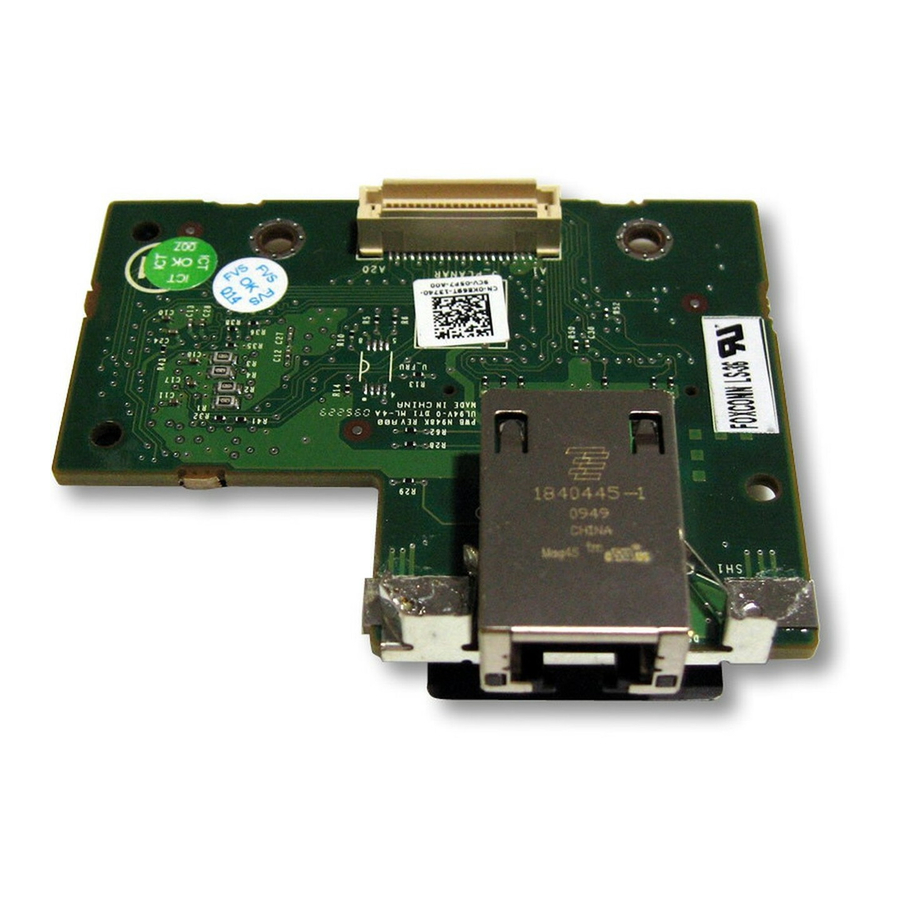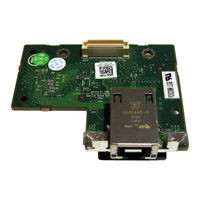
Dell IDRAC6 Manuals
Manuals and User Guides for Dell IDRAC6. We have 2 Dell IDRAC6 manuals available for free PDF download: User Manual
Dell IDRAC6 User Manual (472 pages)
Remote Access Controller 6
Brand: Dell
|
Category: IP Access Controllers
|
Size: 3.04 MB
Table of Contents
-
-
Station
67-
-
Server81
-
-
-
-
Overview140
-
-
Certificate150
-
-
-
-
Using Smart Card170
-
-
Wwn/Mac176
-
Batteries177
-
Post178
-
Power Monitoring180
-
-
Power Budgeting182
-
Power Control185
-
-
-
-
Configuring PEF254
-
Configuring PET255
-
-
-
Help335
-
Config336
-
Getconfig338
-
Getssninfo340
-
Getsysinfo342
-
Getractime346
-
Setniccfg347
-
Getniccfg349
-
Getsvctag350
-
Racreset351
-
Racresetcfg352
-
Getraclog353
-
Clrraclog355
-
Clrsel357
-
Sslcsrgen359
-
Sslcertupload360
-
Sslcertdownload361
-
Sslcertview362
-
Testemail364
-
Testtrap366
-
Vmdisconnect367
-
Clearasrscreen368
-
Fwupdate369
-
Krbkeytabupload371
-
Vmkey372
-
Coredump373
-
Coredumpdelete374
-
Ifconfig375
-
Netstat376
-
Ping6377
-
Traceroute378
-
Traceroute6379
-
Remoteimage380
-
Idracinfo384
-
Cfgoobsnmp386
-
Cfglannetworking387
-
Cfgipv6Url394
-
Cfgserial415
-
Cfgracsecurity432
-
-
Glossary
453 -
Index
463
Advertisement
Dell IDRAC6 User Manual (370 pages)
Integrated Dell Remote Access Controller 6 Version 1.5
Table of Contents
-
-
-
-
-
-
RACADM Synopsis113
-
RACADM Options113
-
-
-
Idrac6 Users129
-
-
-
-
-
Overview203
-
-
-
URL Format219
-
-
-
-
-
SM-CLP Features232
-
Using SM-CLP232
-
SM-CLP Targets232
-
-
-
-
Before You Begin239
-
-
-
Virtual Media255
-
Overview255
-
-
-
-
-
Power Monitoring290
-
-
Using RACADM292
-
-
Using RACADM293
-
-
Using RACADM298
-
-
Using RACADM299
-
-
Utility301
-
Overview301
-
-
Idrac6 LAN303
-
IPMI over LAN303
-
LAN Parameters304
-
Smart Card Logon309
-
-
Reset to Default311
-
-
-
-
-
-
The Idrac6335
-
-
21 Sensors
341-
Battery Probes341
-
Fan Probes341
-
Voltage Probes343
-
-
-
Index
363
Advertisement

